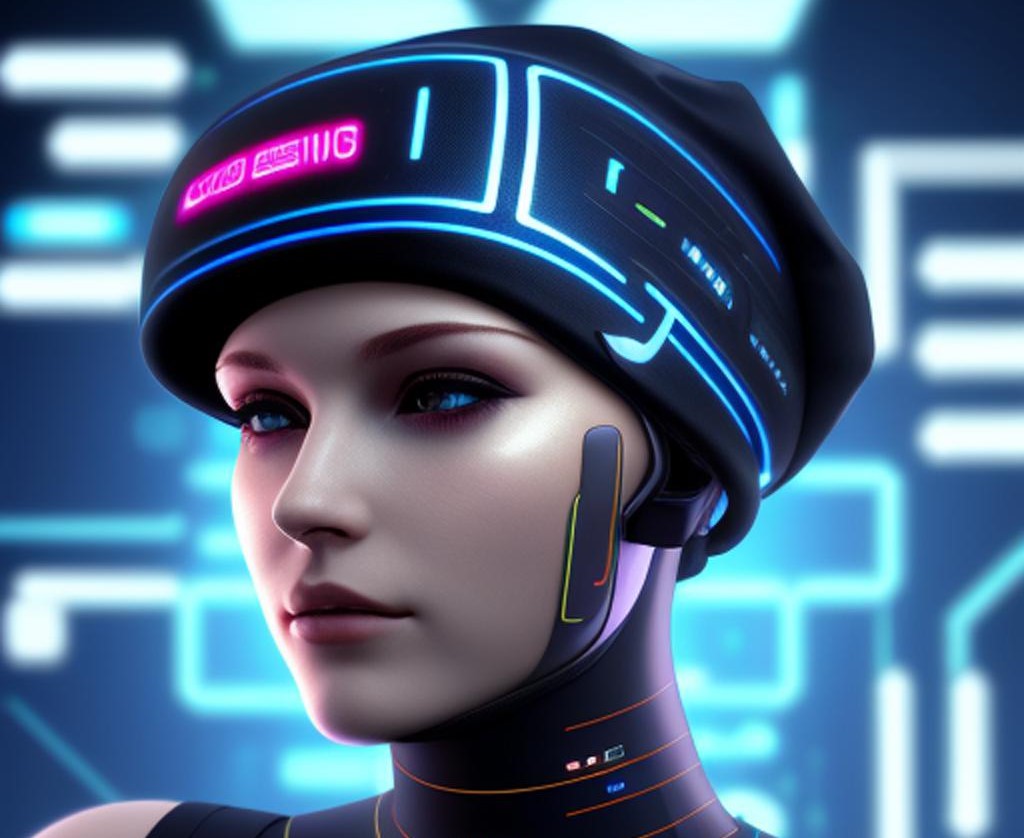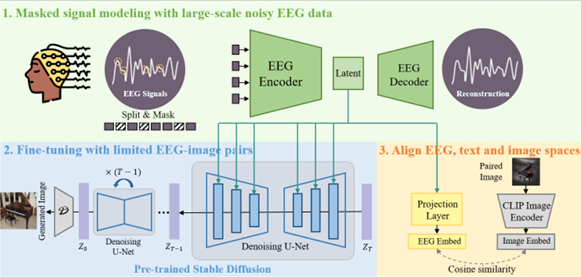Unveiling the Power of Brain Waves: Generating High-Quality Images from EEG Signals
- 20 Jul, 2023
- Deep Learning

Introduction
Electroencephalography (EEG) signals play a vital role in unraveling the mysteries of brain activity. These signals capture the electrical patterns generated by the brain and provide valuable insights into our cognitive processes. This groundbreaking tech was first introduced in a research paper titled This groundbreaking tech was first introduced in a research paper titled 'Dream Diffusion: Generating High-Quality Images from Brain EEG Signals' . In this article, we will delve into the fascinating world of Dream Diffusion, exploring its foundation, decoding process, real-life applications, limitations, and the need for further advancements.
Understanding EEG Signals and Brain Activity
Electroencephalography (EEG) is a non-invasive method of recording electrical activity in the brain. It involves placing small electrodes on the scalp to capture the electrical signals generated by the neurons. These signals represent the communication and coordination among different regions of the brain. By analyzing EEG signals, researchers can gain valuable insights into various mental states, including wakefulness, sleep, and cognitive processes such as attention, memory, and emotions.
Decoding the Brain's Language
The heart of Dream Diffusion lies in its ability to decode the brain's language and establish associations between neural patterns and visual elements. Through extensive training on vast datasets of EEG recordings, Dream Diffusion learns to recognize specific patterns and correlate them with corresponding visual features. By mapping the neural activity to colors, shapes, and textures, the algorithms establish a bridge between brain signals and visual representations.
Generating Dream Images
From Neural Patterns to Coherent Visuals once the decoding process is complete, Dream Diffusion can generate dream images by applying the learned associations to new EEG signals. In real-time, the system analyzes incoming brain signals and translates them into coherent visual representations. These images are not random patterns but meaningful depictions of the thoughts and experiences encoded within the brain activity. Dream Diffusion unlocks a visual window into the intricacies of our minds.
 This method comprises three main components:1)Masked signal pre-training for an effective and robust EEG encoder,2)fine-tuning with limited EEG-image pairs with pre-trained Stable Diffusion, and 3)Aligning the EEG, text, and image spaces using CLI Pen coders
This method comprises three main components:1)Masked signal pre-training for an effective and robust EEG encoder,2)fine-tuning with limited EEG-image pairs with pre-trained Stable Diffusion, and 3)Aligning the EEG, text, and image spaces using CLI Pen coders
Image Source - Dream Diffusion: Generating High-Quality Images from Brain EEG Signals
Real-Life Applications:
From Neuroscience to Creative Inspiration Dream Diffusion holds immense potential in various fields, offering exciting possibilities for both scientific research and practical applications. Let's explore some of the areas where this technology can make a significant impact.
Neuroscience Research: Dream Diffusion opens up new avenues for understanding the complexities of the human brain. By visualizing the neural activity associated with different cognitive processes, researchers can gain valuable insights into the underlying mechanisms of perception, memory, and consciousness. This can lead to breakthroughs in treating neurological disorders and improving mental well-being.
Psychological Therapy: The power of Dream Diffusion extends to psychological therapy. By visualizing a patient's thoughts and emotions in real-time, therapists can gain a deeper understanding of their inner world. This enhanced insight can facilitate more targeted interventions and personalized treatment plans, ultimately leading to better outcomes for individuals struggling with mental health conditions.
Creative Inspiration: Dream Diffusion has the potential to unlock new realms of creativity. Artists, writers, and designers can use the generated dream images as a source of inspiration, tapping into the subconscious realm to fuel their creative processes. The visual representations of thoughts and dreams can serve as a catalyst for innovative ideas and imaginative expression.
Limitations and Challenges
While highlighting the benefits and potential applications, it's essential to acknowledge the limitations and challenges associated with Dream Diffusion. Some limitations include, EEG signals are captured non-invasively and thus are inherently noisy. In addition, EEG data are limited and individual differences cannot be ignored. As with any emerging technology, further advancements and research are needed. Factors such as the complexity of brain signals, individual variations, and the interpretability of generated images are areas that require ongoing investigation and improvement
Powered by Froala Editor
